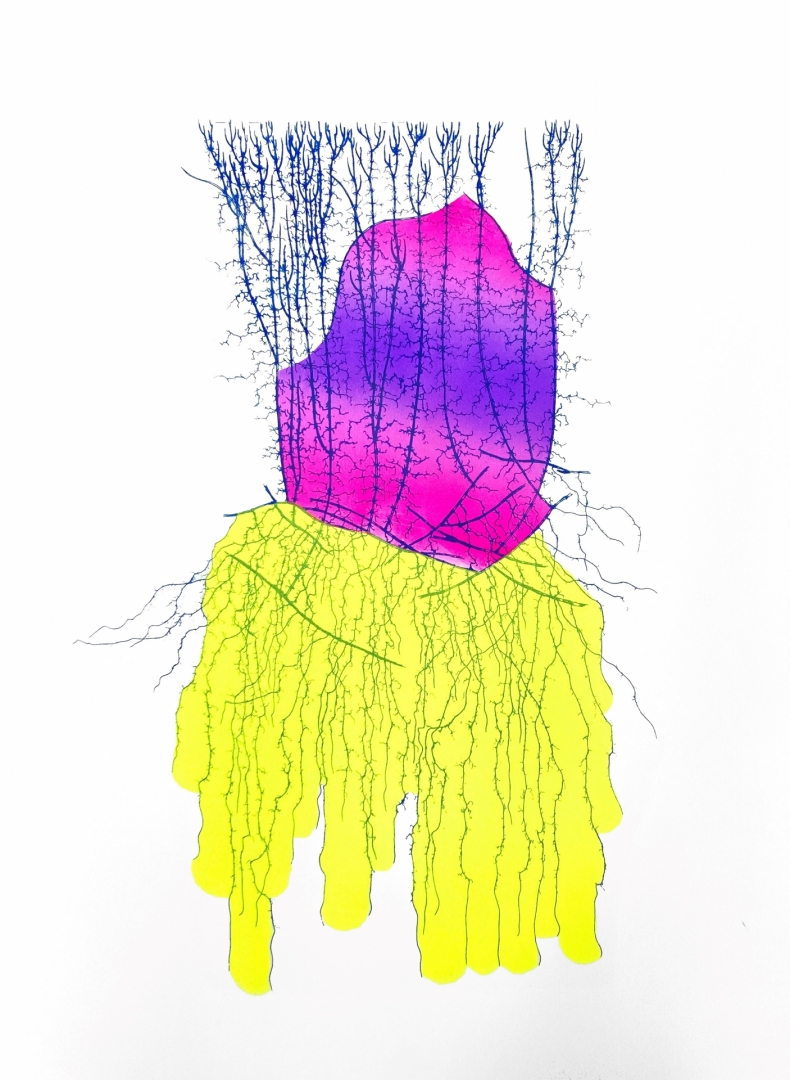Empty landscapes exist in their non-existence, pulsating and undulating in yearning
The idea of Ways of Seeing the Periphery has born out of a landscape experience. The artist has exhibited graphic prints that can be conceptually divided into three:
The focus in the pieces completed in tondo format lies on peripheral, marginal landscapes that bear no visible trace of human activity. One can visualize a fallow ground – an open field, covered with dry and thin layer of soil. Empty planes have been repeatedly surveyed, photographed, drawn, explored, digitalized and marked. Such peripheries, planes and brushy hillocks are potential spaces. Periphery has potential for spatial change, an empty space has potential for metamorphosis. While creating digital strata, intensive and highlighted tones are involved. The luminous screens mediating information emphasize the glow of landscapes. These are cryptical, intensive, enchanting and organized. Out of this concurrence, new and uncanny visions will arise to the brown fields.
There are outlines of bog pools and reflections of clouds on the gallery walls, talking about the bodily experience of landscape. The unique opportunity to physically enter the landscape gives a privileged status. To glide into a soft, dark and slippery bottomless bog lake. To be surrounded by dark water and to observe the sky reflecting back from the surface of the water. To float between the sky and the ground, to surround oneself entirely by the landscape.
The printmaking series “Where did the globeflowers go? Homage to Lore Kutschera (1917–2008)” reveals the roots of nine plants. The botanical drawings by Austrian botanist, phytosociologist and researcher of plant root systems have been used in the series where Toom has transferred these into cyanotypes. The layers of paint have been printed while using the monotyping and screenprinting techniques. The choice of vibrant colours emphasizes the decrease of the biodiversity in soil and refers to the overall mentality that agitates to produce more, faster and with less costs.
Kadri Toom (b. 1984) focuses on experimental contemporary printmaking in her artistic practice. Kadri Toom inspired by themes related to space, silence, emptiness and ephemerality. In her artwork, Toom combines various techniques and materials; and besides connecting painting and printmaking, the artist applies installative tools while exhibiting her pieces. Toom is a member of the Estonian Artists’ Association and Association of Estonian Printmakers. She teaches printmaking at the Estonian Academy of Arts and Pallas University of Applied Sciences in Tartu.
Kadri Toom has graduated from the department of painting at Tartu Art College in 2006 and obtained MA degree in printmaking at the Estonian Academy of Arts in 2009. During her studies, Toom has had an exchange student grant at Saimaa University of Applied Sciences in Finland. She has been in artist residencies and taken part in several international art projects and workshops. Toom has held personal exhibitions in Estonia, Latvia, Finland, Sweden, Germany, Switzerland and Czech Republic.
Exhibition is supported by the Cultural Endowment of Estonia and Estonian Ministry of Culture.
Exhibitions in Draakon gallery are supported by the Cultural Endowment of Estonia, Estonian Ministry of Culture and Liviko Ltd.




